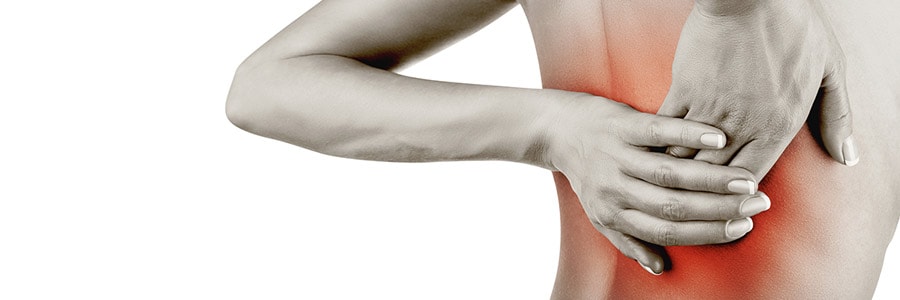
Low back spondylolisthesis
Lumbar (low back) spondylolisthesis suggests that the stabilisation of vertebrae has been reduced and allowed some slippage. The condition occurs when a vertebra slips forward in relation to the bone below it. The causes of spondylolisthesis include:
Congenital spondylolisthesis. This is a condition someone is born with. It results from a defect in the formation of the facet, which is the part of the vertebra that joints to the next vertebra.
Degenerative spondylolisthesis. Degeneration (wear and tear) of the vertebrae may allow some forward slippage.
Isthmic spondylolisthesis. This is a form of spondylolisthesis that occurs as a result of spondylolysis. Spondylolysis is a stress fracture in the vertebrae. These fractures weaken the bone and allow forward slippage.
Pathologic spondylolisthesis. Forward slippage can occur when a vertebra becomes diseased. There are many different disease processes that affect vertebrae such as tumours, tuberculosis, infection and metabolic bone disease.
Iatrogenic spondylolisthesis. This occurs after a surgical medical procedure.
Traumatic spondylolisthesis. This can occur after a significant fall or trauma such as a motor vehicle accident or a fall from a height.
Symptoms
The most common symptom is pain that radiates from the low back to the buttock area of one or both legs. Hamstring tightness in one or both legs is also common. There may also be some tenderness about the spine where the spondylolisthesis is. Some people will experience no symptoms at all. Neurological symptoms may also be present in some grade and types of spondylolisthesis.
Treatment
The treatment of spondylolisthesis depends on the type, grade and nature of the spondylolisthesis.
Other causes of low back pain
The following conditions are some causes of low back pain.
- Lumbar myelopathy
- Cauda equina syndrome
- Lumbar spinal stenosis
- Bone Spurs
- Degenerative disc disease (DDD)
- Pinched nerve
- Lumbar radiculopathy
- Lumbar facet joint pain
- Bulging Disc
- Herniated Disc
- Disc protrusion
- Discogenic pain
- Post laminectomy syndrome
- Coccydynia
- Spondylolisthesis
- Spondyloarthropathy
- Ankylosing spondylitis
- Reiter’s syndrome
- Psoriatic arthritis
- Enteropathic arthritis
- Sacroiliac disorders
- Foot drop
- Spinal neurofibroma
- Acute low pain
- Chronic low back pain
- Stiff low back
- Trigger points in the low back
- Red flags for low back pain
- Internal disc disruption
- Lumbar spondylosis
- Lumbar facet syndrome
- Lumbar foraminal stenosis
- Lumbar disc herniation
- Lumbar osteoarthritis
- Lumbar osteophytes








